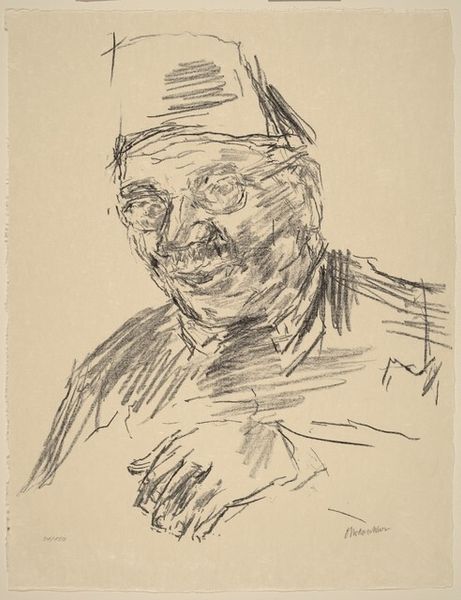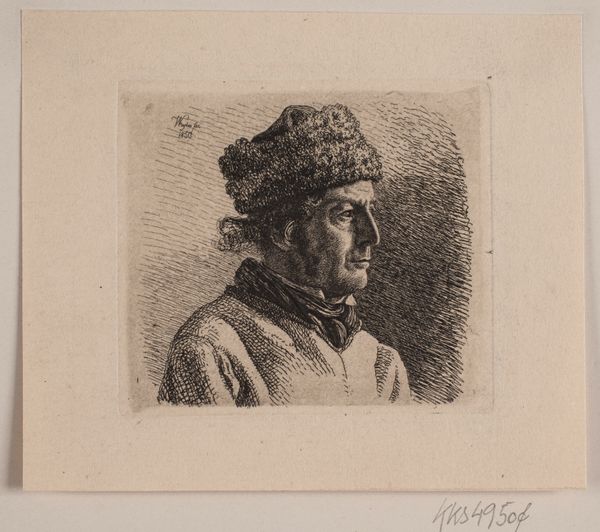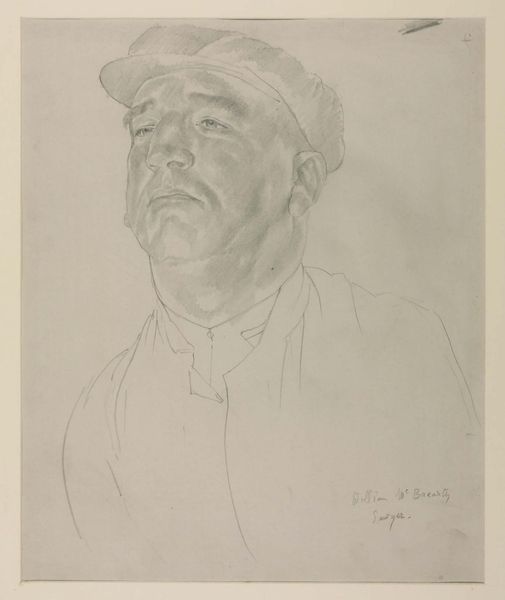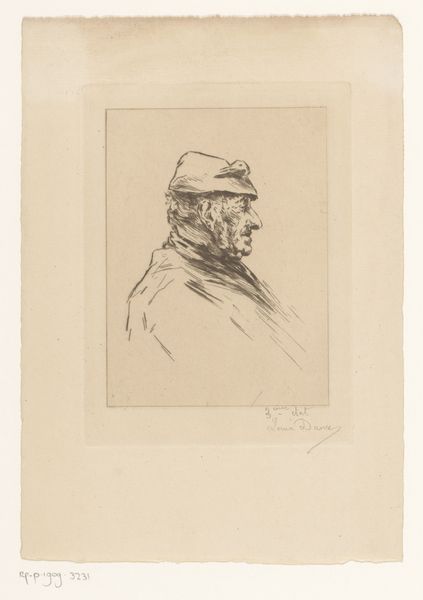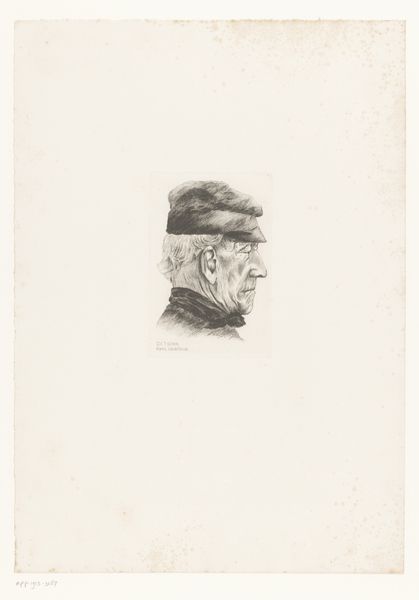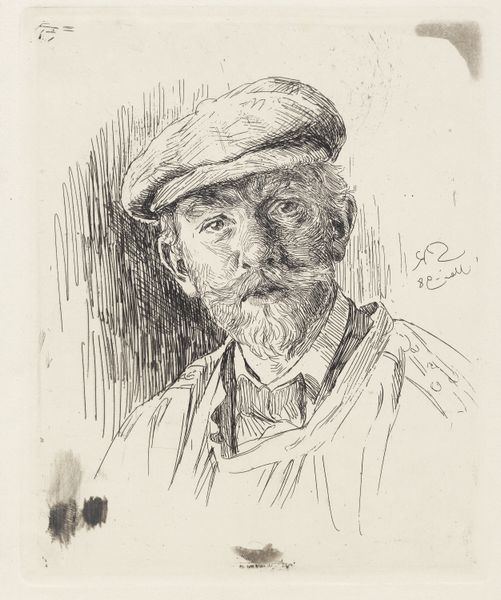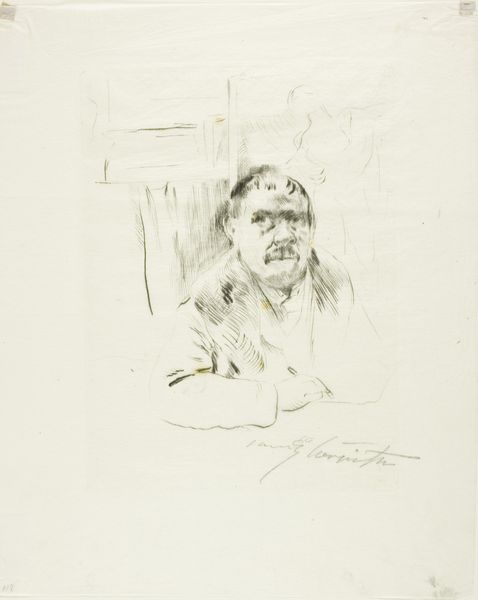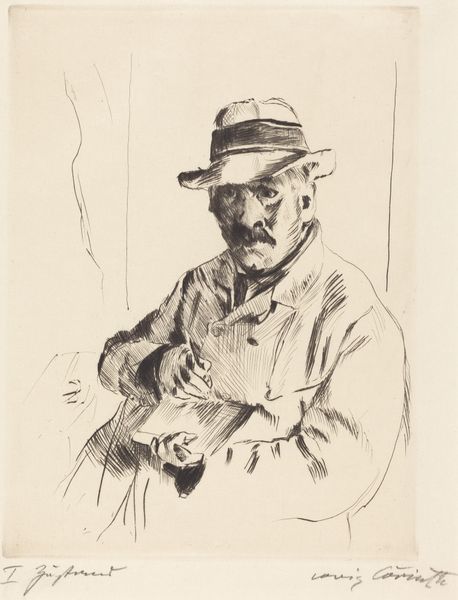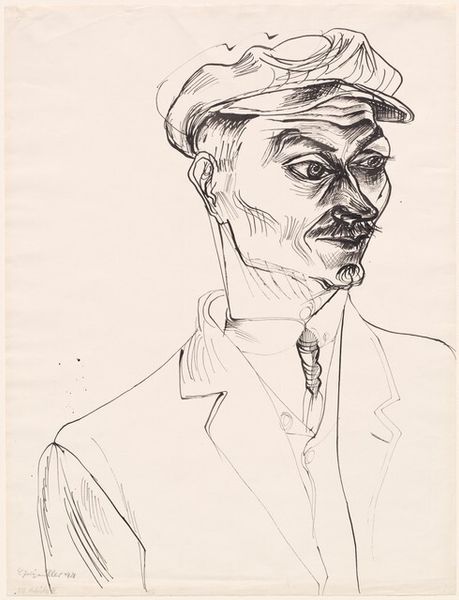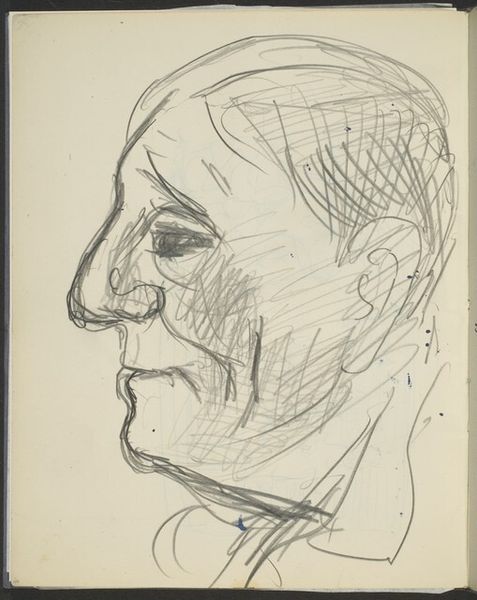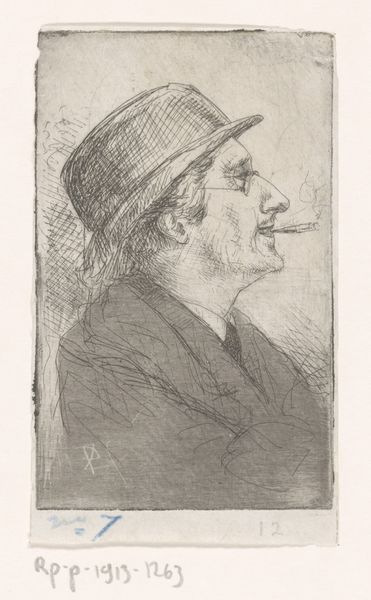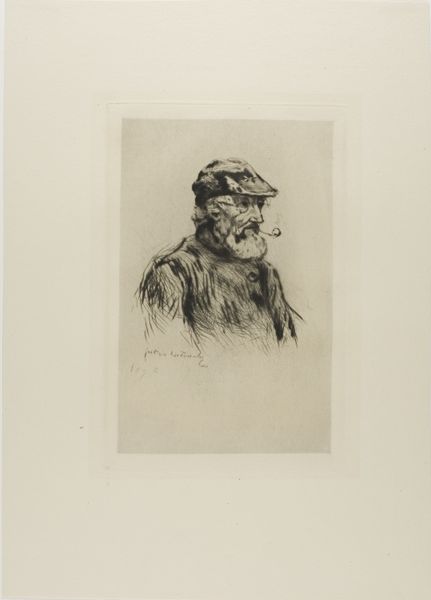
print, etching
#
portrait
# print
#
etching
#
line
#
portrait drawing
#
realism
Dimensions: plate: 30.48 × 25.4 cm (12 × 10 in.)
Copyright: National Gallery of Art: CC0 1.0
Curator: Walter Tittle's etching, "Marechal Joffre," created in 1923, depicts a portrait of the French general Joseph Joffre. It’s quite striking, don’t you think? Editor: My immediate impression is one of power, but also transience. The loose, almost unfinished quality of the etching lines, particularly in the lower portion, gives it a feeling of something fleeting, despite the general's formidable presence. The uniform details stand out from the unfinished brushstrokes. Curator: It's interesting that you mention that. Tittle was known for capturing the likenesses of prominent figures, particularly during and after World War I. This portrait served a specific purpose – to commemorate Joffre’s role and legacy as a key figure in the Allied victory. Editor: Commemorative, certainly, but look at how the sharp lines define his face and cap versus the almost gestural marks depicting the rest of his form, particularly his jacket! One can imagine this choice as emphasizing his head as the literal ‘head of the war.’ How do we interpret the work put into some elements versus others? Curator: That connects to how public figures were presented and consumed at the time. Consider the cultural landscape of the post-war period. The need to celebrate heroes while grappling with immense loss… Prints such as this one were circulated widely, contributing to the construction of national narratives. Editor: Precisely, it gets at the materiality of memory and meaning-making. This wasn't a unique oil painting reserved for an elite patron; instead, the use of etching implies mass production for distribution across social strata, engaging public imagination through accessibility and reproducibility of form. The pricepoint would likely have encouraged greater viewership from working and middle class buyers. Curator: I see your point. Etchings allowed for a broader dissemination of images, playing a role in shaping public opinion and collective memory. How do we memorialize, and whom do we memorialize—these were all crucial questions being asked at the time. And portraits like this one of Marechal Joffre provide some insight into the answers society embraced. Editor: Right! It’s less about inherent artistic genius, and more about art’s capacity for generating and spreading social meanings – which is what makes this portrait so compelling. Curator: It's fascinating to consider how different modes of analysis can converge to enhance our comprehension. This close look really illuminated those complex issues and functions of post-war imagery. Editor: Absolutely, and analyzing Tittle's process allows for an engagement with socio-historical influences; seeing the portrait as more than a picture brings into view production processes related back directly onto Joffre himself!
Comments
No comments
Be the first to comment and join the conversation on the ultimate creative platform.


